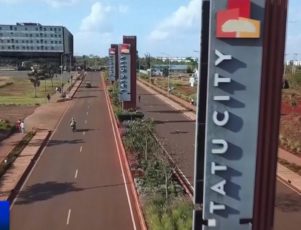On the outskirts of Nairobi, a new city is rising from the red soil of Kenya’s central plateau. Known as Tatu City, this ambitious project is often referred to as Africa’s first “startup city” — a private urban development designed to combine modern infrastructure, business efficiency, and sustainable living. More than just a real estate venture, Tatu City embodies a new model for urban development on the continent, one that aims to reconcile rapid urbanization with economic opportunity.
A laboratory for urban innovation
Launched in 2010 by Rendeavour, one of Africa’s largest urban developers, Tatu City covers nearly 5,000 acres and is envisioned as a self-sustaining community for more than 250,000 residents. It includes residential neighborhoods, schools, hospitals, parks, and an industrial zone that already hosts major international companies. Unlike traditional city expansions, Tatu City was conceived as a private governance model — with its own bylaws, zoning rules, and development authority.
This approach seeks to bypass the inefficiencies that often plague public urban planning in Africa, such as bureaucratic delays, corruption, and underinvestment in infrastructure. Roads, utilities, and waste management systems are built before residents move in — reversing the usual order of chaotic, unplanned growth seen in many African cities. The result is a clean, organized, and investor-friendly environment that aims to attract both multinational corporations and local entrepreneurs.
Opportunities and promise
Tatu City’s advocates see it as a beacon for the continent’s urban future. Africa’s population is expected to double by 2050, with nearly 60 percent living in cities. Meeting this demographic explosion will require bold experiments in housing, mobility, and governance. Private cities like Tatu offer a prototype for how to accommodate growth while maintaining livability.
The project has already generated thousands of jobs and attracted more than 80 businesses, including manufacturing firms, tech startups, and logistics hubs. It also integrates sustainability principles — such as solar power, green spaces, and water recycling — aiming to balance economic expansion with environmental responsibility. For investors, Tatu City symbolizes a shift from speculative real estate toward long-term urban ecosystems that can support innovation, productivity, and inclusive growth.
A model under debate
Yet this vision is not without controversy. Critics argue that privately governed cities risk deepening social inequality by creating enclaves accessible only to the wealthy. While Tatu City promotes inclusivity through mixed-income housing, its cost of living and security systems raise questions about who truly benefits from this “new African city.” Others worry about accountability and democratic participation: what happens when urban governance is managed by private developers rather than elected officials?
Moreover, the success of such projects depends on their ability to connect with surrounding areas. If startup cities remain isolated bubbles, their contribution to national urban development will be limited. Integration with public infrastructure, local labor markets, and regional planning remains crucial.
Toward the African city of tomorrow
Tatu City represents both the promise and the paradox of Africa’s urban future: a blend of innovation, ambition, and complexity. It challenges traditional notions of what a city should be — not merely a place to live, but a dynamic ecosystem built around efficiency and opportunity. As more projects of this kind emerge across the continent, from Nigeria’s Eko Atlantic to Ghana’s Appolonia City, Africa’s urban story may well be written through these new experiments in private development.
Whether they become models of sustainable growth or symbols of segregation will depend on one key factor: the ability to balance profitability with the collective right to the city.
Photo : youtube.com

